On this week's stellar Naked Scientists we're staring out into space. We find out how technology developed to see inside your body can give a whole new dimension to pictures of deep space, we celebrate the launch of the International Year of Astronomy and discover a new type of dwarf galaxy formed from ancient primordial gas clouds. Also in the mix, overcoming peanut allergies, fat dinosaurs and disguised meningitis bacteria. Plus, we answer Sir David Attenborough's Question of the Week and Ben and Dave build a telescope!
In this episode
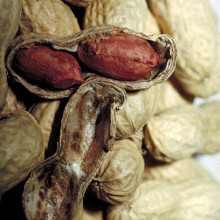
Scientists crack Peanut Allergy Problem
Researchers have successfully treated four individuals with peanut allergies using an approach called oral immuno-therapy.
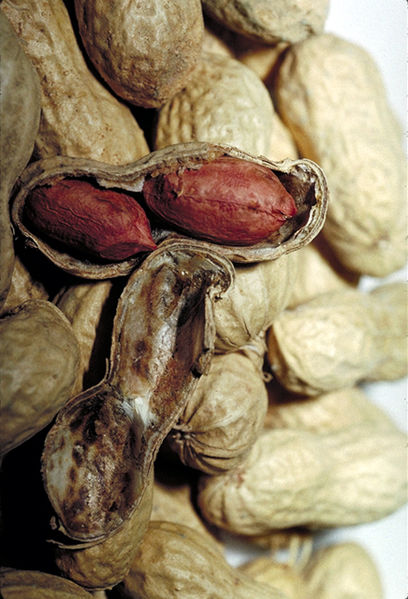 Writing in the journal Allergy, lead author Dr Andy Clark, who is based at Addenbrooke's Hospital in Cambridge, explains how he and his team recruited four boys aged between nine and thirteen with established allergic reactions to peanuts. Blood tests on the children confirmed the presence of ciculating peanut antibodies, and injecting small amounts of peanut protein into the skin provoked signs of inflammation, proving that the boys were reacting to the nuts.
Writing in the journal Allergy, lead author Dr Andy Clark, who is based at Addenbrooke's Hospital in Cambridge, explains how he and his team recruited four boys aged between nine and thirteen with established allergic reactions to peanuts. Blood tests on the children confirmed the presence of ciculating peanut antibodies, and injecting small amounts of peanut protein into the skin provoked signs of inflammation, proving that the boys were reacting to the nuts.
The children were then given daily doses of peanut flour containg the nut protein to eat every day. The starting doses were very small at just 5mg per day but this was doubled every two weeks until the participants were eating 800mg per day, equivalent to about four peanuts.
After a further six weeks at this top dose the volunteers were then "challenged" with twelve whole peanuts, which they were all able to consume without ill effects. During the study the volunteers were equipped with antihistamines and adrenaline syringes in case of anaphylaxis, but apart from mild reactions the process was well tolerated by the subjects who have now been prescribed a daily peanut ration of five nuts per day to ensure their new-found "tolerance" for the food is maintained.
Both the patients and the researchers are delighted with the results but they do caution that it's a small trial and not something that should be undertaken outside of a properly monitored medical setting.
"Don't try this at home," says Clark.
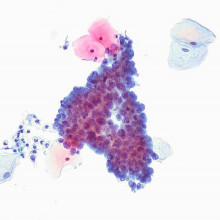
Cervical cancer rates higher in poorer areas
Cervical cancer is in the news here in the UK as reality TV star Jade Goody has been diagnosed with the diease. And this week researchers at King's College London have published a paper showing that rates of cervical cancer are higher in poorer areas than in richer ones - results hat have important implications for targeting cancer awareness and screening campaigns.
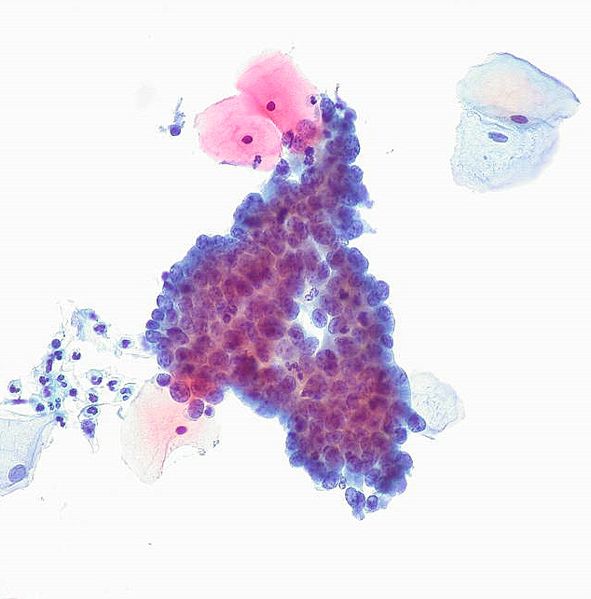 Led by Dr Laura Currin, the researchers analysed data from over 2,200 women diagnosed with cervical cancer between 2001 and 2005 in London, Kent, Surrey and Sussex. They then looked for any patterns linking the disease to social deprivation, and related factors such as smoking, teen pregnancy and cervical screening.
Led by Dr Laura Currin, the researchers analysed data from over 2,200 women diagnosed with cervical cancer between 2001 and 2005 in London, Kent, Surrey and Sussex. They then looked for any patterns linking the disease to social deprivation, and related factors such as smoking, teen pregnancy and cervical screening.
The team found that the rates of cervical cancer varied dramatically across South-East England, and in some neighbouring areas there was up to a three-fold difference in rates, with much higher rates of cervical cancer in poorer areas.
There's a number of reasons for this. Firstly, smoking is linked to increased risk of cervical cancer, and rates of smoking are higher in poorer areas than richer ones. Also, we know that women in poorer areas are less likely to take up cervical screening, which saves thousands of lives every year in the UK. Last year alone, hundreds of thousands of women across the country failed to take up their invitation for screening.
The key thing about cervical cancer is that it's a highly preventable disease. The national screening programme of smear tests picks up pre-cancerous changes, so women can be treated before the disease has even developed. These new results tell us that healthcare providers and health campaigners need to focus their efforts more firmly on reaching women in poorer areas of the UK, encouraging them to be aware of symptoms such as bleeding between periods, and going for screening when they are invited.
And although Jade's story is a terrible personal tragedy for her and her family - as it is for any family affected by cancer - she has done a lot to raise awareness of cervical cancer among younger women. Cancer Research UK have seen a big jump in the number of people seeking information about cervical cancer symptoms and screening on their CancerHelp UK website and Science Update Blog. Hopefully we'll see a jump in the number of women going for screening, particularly from poorer areas, which could lead to lives saved in the future.

New way to battle opioid withdrawl
Scientists have found a drug which is highly effective at combating the symptoms of opioid withdrawal.
 Writing in the Journal of Pharmacogenetics and Genomics, Stanford University researcher Larry Chu and his colleagues made the discovery by studying how 18 different strains of morphine-addicted laboratory mice coped with going cold turkey. When opioid-accustomed mice are given a drug called naloxone, which blocks the effects of opiates, they jump up and down, and strains that show more jumping behaviour seem to be worse withdrawers than animals that jump very little.
Writing in the Journal of Pharmacogenetics and Genomics, Stanford University researcher Larry Chu and his colleagues made the discovery by studying how 18 different strains of morphine-addicted laboratory mice coped with going cold turkey. When opioid-accustomed mice are given a drug called naloxone, which blocks the effects of opiates, they jump up and down, and strains that show more jumping behaviour seem to be worse withdrawers than animals that jump very little.
To find out why the team compared the DNA sequences of animals that jumped the most with the mouse strains that jumped the least. The team were gratified to find a DNA hotspot in a gene called Htr3a, which is a brain receptor for the transmitter substance and chemical feel-good factor serotonin, also known as 5HT. The strains of animals with the worst withdrawl effects seemed to have a different form of this 5HT3 receptor than the animals with fewer side effects, prompting the team to speculate that 5HT might be linked to at least some of the classical symptoms associated with drug withdrawal.
To find out they gave the mice doses of the drug ondansetron, which blocks 5HT3 receptors and is used to prevent nausea in patients undergoing chemotherapy. Administration of the drug to the withdrawing mice produced a dramatic improvement, and since the drug is already licensed for human use, the team conducted a simple trial on humans volunteers. Similar to the mice, 8 subjects received either ondansetron or a placebo before being treated with morphine and then put into withdrawal using naloxone.
Predictably, those given ondansetron first reported far fewer unpleasant withdrawal effects compared with their placebo-treated counterparts. The researchers are pleased with the result, but caution that the drug isn't a panacea and addiction is a hard nut to crack. At the same time, the findings offer encouragement that other receptor-systems responsible for the effects of physical addiction, which compel addicts to continue using drugs, will be found so that more effective treatments can be developed.
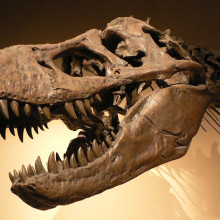
Fattysaurus rex
We usually think of dinosaurs as huge great beasts, roaring about and generally being terrifying. Now researchers at the University of Manchester have used laser imaging to reveal whether our favourite prehistoric beasts were trim and fit, or big old fattysauruses.
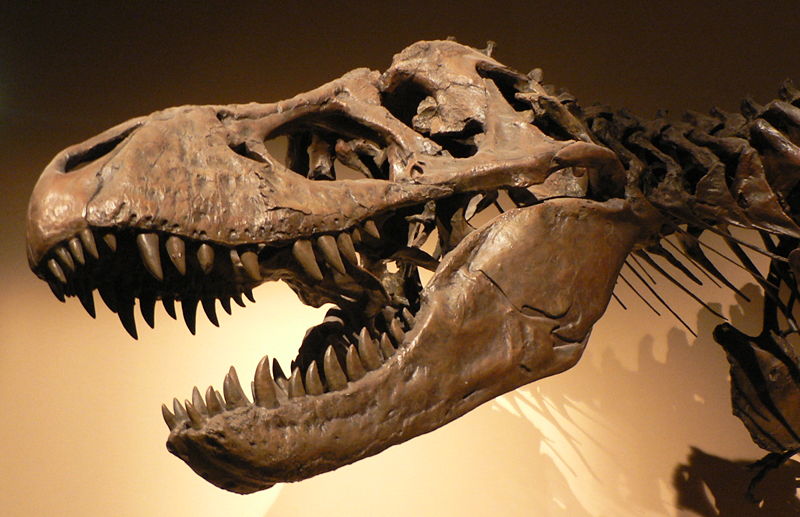 Writing in the journal PLoS One, Karl Bates and his team used laser imaging and 3-D reconstruction techniques to recreate the bodies of five dinosaurs of differing sizes as they might have appeared in real life. They looked at two Tyrannosaurus rexes, an Acrocanthosaurus atokensis, a Strutiomimum sedens and an Edmontosaurus annectens. Their results suggest that the smaller of the two T. rexes could have weighed anywhere between 5.5 and 7 metric tonnes, while the larger one might have weighed in at 8 tonnes.
Writing in the journal PLoS One, Karl Bates and his team used laser imaging and 3-D reconstruction techniques to recreate the bodies of five dinosaurs of differing sizes as they might have appeared in real life. They looked at two Tyrannosaurus rexes, an Acrocanthosaurus atokensis, a Strutiomimum sedens and an Edmontosaurus annectens. Their results suggest that the smaller of the two T. rexes could have weighed anywhere between 5.5 and 7 metric tonnes, while the larger one might have weighed in at 8 tonnes.
They also think that Acrocanthosaurus atokensis, a big predator similar to T. Rex weighed around 6 tonnes, but the ostrich-like Strutiomimum was probably a weeny 04-0.6 tonnes, while Edmontosaurus weighed in at just under a tonne.
To get their reconstructions, the researchers used a laser scanning technique called LIDAR to image each dinosaur's skeleton. They then used and computer modelling methods that can create a high-resolution 3-dimensional computer image of the skeleton, which they can use to investigate the potential mass of the living dinosaur, its internal organs, and its movements.
After making these reconstructions, the team then tweaked the sizes of the body parts and organs to find the maximum and minimum masses that the animals might have been. Although we'll never be able to know exactly how fat or thin they were, this analysis tells us the range of possible body masses that are physically possible. And because of the lack of cakes and telly in prehistoric times, the researchers think that the dinos probably come in at the lower end of heir predicted weight ranges, as there's no biological need for them to be fatties, as this would slow them down, making them less effective predators, or easy prey.
To demonstrate the accuracy of their models, the researchers applied their techniques to a modern-day ostrich skeleton, and found that their predicted mass measured up pretty well against the living bird.
The next steps - literally - for the researchers will be to use their models to make predictions about how the dinosaurs walked and ran, which will tell us more about their lives and evolution.

12:34 - Meningitis in Disguise
Meningitis in Disguise
with Professor Susan Lea, Oxford University
Chris - Professor Susan Lea has a paper in the journal Nature this week, explaining how the bacteria do this and manage to hide themselves. Susan, how do they disguise themselves?
 Susan - Hi, Chris. Well the work came to us in a problem that was brought by Chris Tang at Imperial College. He'd been working with meningitis for many years, looking at the bacteria and trying to understand them in more detail, trying to generate therapeutics. They'd noticed a couple of years ago that the bacteria somehow managed to mark themselves as human cells by coating themselves in a protein that circulates in our own blood, called factor H. This protein is a very important part of how we regulate our own immune response in that we've got one arm of our immune system that essentially seeks to destroy anything it comes into contact with in the blood. To protect our cells we develop a series of sugars on our cells that then bind a protein called factor H which turns off this part of the immune system.
Susan - Hi, Chris. Well the work came to us in a problem that was brought by Chris Tang at Imperial College. He'd been working with meningitis for many years, looking at the bacteria and trying to understand them in more detail, trying to generate therapeutics. They'd noticed a couple of years ago that the bacteria somehow managed to mark themselves as human cells by coating themselves in a protein that circulates in our own blood, called factor H. This protein is a very important part of how we regulate our own immune response in that we've got one arm of our immune system that essentially seeks to destroy anything it comes into contact with in the blood. To protect our cells we develop a series of sugars on our cells that then bind a protein called factor H which turns off this part of the immune system.
Chris - How do the Neisseria meningitidis bacteria exploit that?
Susan - Neisseria can't make the same sugars that we make. They don't have the machinery to make those sorts of chemicals. Instead the Neisseria has chosen a different route and manufactures another protein. Instead it uses this protein to essentially seek out and bind the factor H to coat the bacterium in factor H: the way our own cells have done but by using a very different chemistry underlying the reaction.
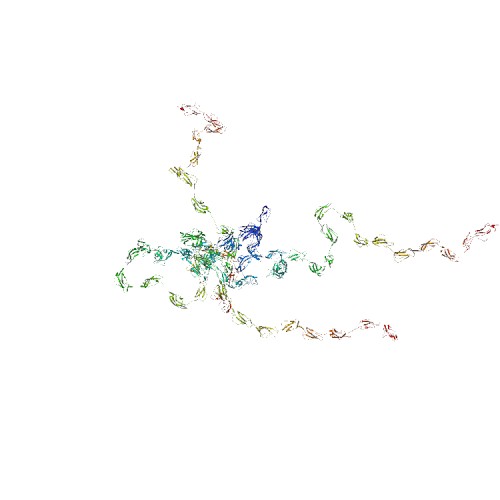 Chris - Your work has been to discover the structure of that protein to work out how the bacteria grab this protective, this disguise factor H from the blood and then decorate themselves with it?
Chris - Your work has been to discover the structure of that protein to work out how the bacteria grab this protective, this disguise factor H from the blood and then decorate themselves with it?
Susan - Absolutely. We've worked with Chris to generate the structure of the actual complex between the proteins of the bacteria and the proteins from our cells. In doing this it allows us to see how the bacteria uses the chemistry of proteins to mimic the chemistry of sugars that we have on our cells. The interactions are actually very similar. Some years ago we looked at the structure of sugars binding factor H. We found the structure of this protein binding factor H mimics the same sorts of interactions that you use in protein-based chemistry rather than sugar-based chemistry.
Chris - And how, now that you've got that structure, will this help us to get a vaccine? We've had a vaccine for the A strain of meningitis for a long time and that's helped in places like Africa. We've had the vaccine for strain C which has made a dramatic difference for young people, especially people going to university. B has always been the big problem. 90% of meningitis cases in Britain are down to group B. How is this going to help us get a vaccine against this now?
Susan - Essentially the protein we've done the structure of is actually one of the components of the vaccines by both Novartis and Wyeth that are currently in phase through clinical trials are looking quite promising. We think, from looking at our structure, we predict that by altering a very small part of the protein we can make a protein that will no longer bind with factor H and we suspect that this will make a much better vaccine. It won't have a large part of its surface covered up my factor H. When you immunise somebody with the current versions of the vaccine trials that are going on - in fact much of the bacterial protein will be hidden from the immune system because it will be bound to factor H. You therefore won't get as good an immune response against it as you might otherwise get. We've made versions of this protein which are more than 98% - 99% identical to the natural form but they no longer can bind factor H. We think that these will be much better candidates for targets in the vaccine.

How long does it take for heat to reach us from the sun?
Chris - The answer is that heat arrives in the form of light, at visible and infra-red wavelengths, largely, that's reach us from the Sun. Light is electromagnetic radiation, which propagates about about 300 million metres per second. So that too takes 8 minutes to get here...
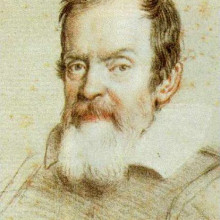
21:25 - Celebrating the International Year of Astronomy
Celebrating the International Year of Astronomy
with Steve Owens, Professor Lord Martin Rees, Dr Darren Baskill.
Meera - This week, I'm at the Royal Observatory in Greenwich for the UK launch for the International year of Astronomy. There's loads going on here tonight, including telescope viewings, models of early telescopes and planetarium shows. Amid all these events I've tracked down Steve Owens who's the UK coordinator for the International Year of Astronomy. Steve, what are your aims for celebrating astronomy this year?
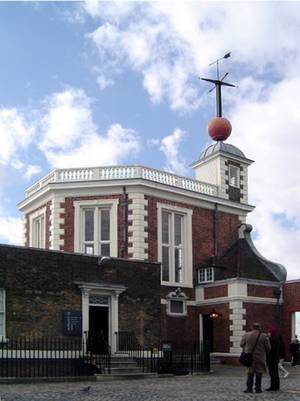 Steve - We're looking to use the International Year of Astronomy as an opportunity to inspire people, to make them enthusiastic and astronomy, to find out things they haven't found out before, to go outside at night and look up at the sky. That will hopefully have the effect of increasing the number of scientists we have in the UK and help the UK develop its science.
Steve - We're looking to use the International Year of Astronomy as an opportunity to inspire people, to make them enthusiastic and astronomy, to find out things they haven't found out before, to go outside at night and look up at the sky. That will hopefully have the effect of increasing the number of scientists we have in the UK and help the UK develop its science.
Meera - To get people excited about astronomy this year what have you got planned?
Steve - We've got things happening around the country. The best place to find out what's happening in your area is our website:
www.astronomy2009.co.uk. We have 2000 events already on our calendar and we're getting hundreds more in every week. Local astronomy societies are planning events. University Astronomy departments are running open days, people who own observatories are opening them to the public. We have online activities, for example, we have a cosmic diary where astronomers are blogging their lives and activities. There are literally thousands of activities happening.
Meera - Are there particularly big or main events that are happening at key moments during they year?
Steve - We're focussing a lot of our activities on what we're calling spring moon watch and autumn moon watch. If you like, they're the National Astronomy Weeks for this year. They're running from the 28th March to the 5th April and the 24th October to 1st November. Those are opportunities to get everyone in the country out looking at the sky. There are other big dates, big anniversaries: for example, Thomas Harriet, who was the British Galileo - he beat Galileo to it in 1609 on July 26th. He observed the moon through a telescope for the first time. No one had ever done it before. Galileo did it a few months later but Galileo was a good self-publicist. He told people about it and became famous. Thomas Harriet didn't tell anybody and therefore is not consequently very famous. We are celebrating his life and his achievements in the very place he observed, exactly 400 years to the day after he made his observation.
Meera - I'm now here with the Astronomer Royal and President of the Royal Society, Professor Lord Martin Rees. In the 400 years since Galileo made his observations, what do you think the main discoveries in the field of astronomy have been?
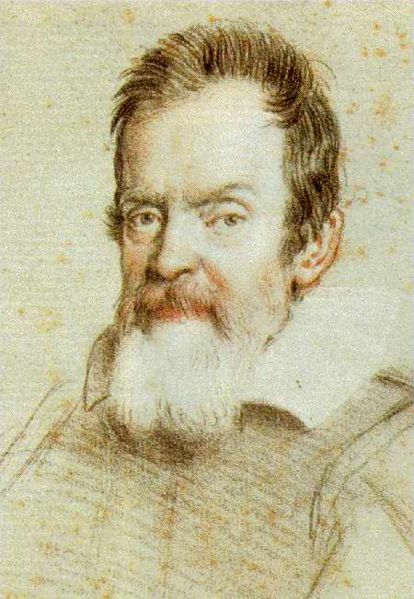 Martin - Galileo was the first person to use an instrument to enhance what you could see which the unaided eye. Astronomy has always been at the forefront of technology, ever since that time. Here at the Royal Observatory precision instruments were made to determine longitude and measure time. Now, of course our knowledge of the universe is enhanced by very sensitive ways of detecting wave light and enhanced telescopes on the ground and in space. It's always been technology that's driven science and, of course, the science feeds back into astronomy. Through those developments we have come to realise the scale of the universe and the very wide range of objects in it: galaxies, stars and planets.
Martin - Galileo was the first person to use an instrument to enhance what you could see which the unaided eye. Astronomy has always been at the forefront of technology, ever since that time. Here at the Royal Observatory precision instruments were made to determine longitude and measure time. Now, of course our knowledge of the universe is enhanced by very sensitive ways of detecting wave light and enhanced telescopes on the ground and in space. It's always been technology that's driven science and, of course, the science feeds back into astronomy. Through those developments we have come to realise the scale of the universe and the very wide range of objects in it: galaxies, stars and planets.
Meera - What would you say the main questions that remain unanswered today are?
Martin - Well we're still just beginning. I would say that we would like to understand how our universe evolved from simple beginnings about 14 billion years ago into the complex hotchpotch we see around us of galaxies, stars, atoms and, on at least one planet, a complex biosphere where we've evolved. Another thing we'd like to do is to understand the planets around other stars which have been discovered just in the last ten years. I think in the coming decades we will realise that each star we see in the sky is the centre of a retinue of planets which are just as interesting as the planets we're used to in our solar system. We may know whether there's life on some of them.
Meera - What area of astronomy are you particularly focussing on at the moment?
Martin - Well I'm interested in understand how the first stars and galaxies formed and how long after the Big Bang that happened. I'm also interested in rather more speculative questions about how big the universe is. That might sound a strange question but the part of the universe we see with our telescopes, which extends about 10 billion light years away may be just a tiny fragment of physical reality. We'd like to know how much more there is beyond what we can directly observe.
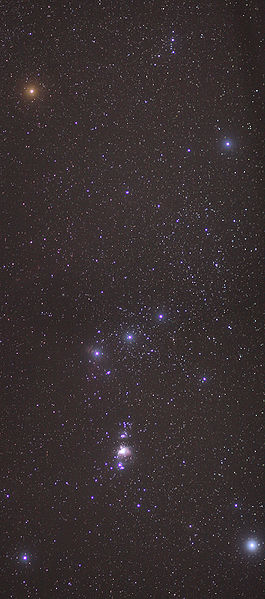 Meera - As I mentioned, there's a whole host of activities going on tonight, one of which is a planetarium show, showing people what to look out for in the night sky this year. I'm now in the planetarium with Darren Baskill, one of the astronomers here at the Royal Observatory. Darren, what are the things people should be looking out for this year in the night sky?
Meera - As I mentioned, there's a whole host of activities going on tonight, one of which is a planetarium show, showing people what to look out for in the night sky this year. I'm now in the planetarium with Darren Baskill, one of the astronomers here at the Royal Observatory. Darren, what are the things people should be looking out for this year in the night sky?
Darren - The moon is always a beautiful sight and it's a wonderful object to look at through, even binoculars. Then there's the planets Jupiter and Saturn. They will both be visible throughout the year. The rings of Saturn you can see through even a small telescope and if you've got really good eyesight you can see the rings of Saturn through binoculars. Jupiter also has over 60 moons but four of those moons are so big and so bright we can easily see those moons in binoculars.
Meera - The sky's a pretty big thing so which direction should people be looking in to see these planets?
Darren - The planets are very bright in the night sky. In the summer if you look towards the south, at about 9/10 o'clock in the evening Jupiter will be the brightest object in that direction.
Meera - Are there any other highlight as well as planets that people can look out for this year?
Darren - Yes well early-on at the beginning of the International Year of Astronomy in the winter months will be dominated by the constellation of Orion. Look south in the evening sky throughout the winter. There's a bright red star called Betelgeuse and there's a bluer star called Rigel at the bottom of Orion. If you look for two stars, quite close to each other, but separated by a hand span at arm's length - one bright red star and a bright blue star - you've probably found the constellation of Orion.
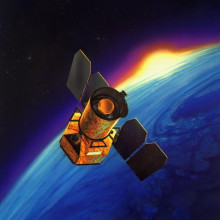
35:23 - Dwarf Galaxies from Primordial Clouds
Dwarf Galaxies from Primordial Clouds
with Dr David Thilker, The Johns Hopkins University
Chris - Scientists have discovered a new type of Galaxy. They've been using a NASA space telescope called GALEX - the galaxy evolution explorer which can see ultraviolet light. A team of US scientists have been studying a patch of the sky called the Leo ring. This is thought to be a leftover remnant from the Big Bang. It's basically a huge cloud of hydrogen and helium. What scientists saw in there were signs of newborn stars in little galaxy sized clumps inside that ring. To tell us why that's important and why they didn't see any dark matter to go with it here's David Thilker.
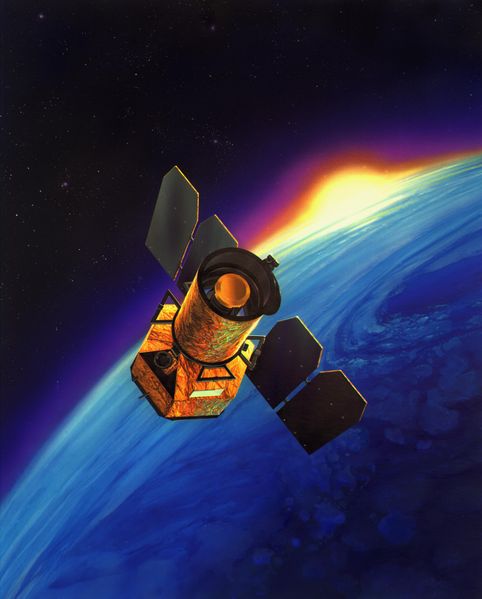 David - What we've done is discovered a new, unexpected type of galaxy, a dwarf galaxy forming in the local universe. These galaxies are odd because they have apparently condensed from pristine gas without the help of dark matter anyway.
David - What we've done is discovered a new, unexpected type of galaxy, a dwarf galaxy forming in the local universe. These galaxies are odd because they have apparently condensed from pristine gas without the help of dark matter anyway.
Chris - Can you just explain that a little bit? When you say this is made from pristine gas, what do you mean by that?
David - In the universe today there are very few remnants of the material from which all other galaxies formed. The best known candidate for one of these pristine primordial clouds is the Leo ring. It's a structure 600,000 light years wide, consisting only of hydrogen and helium in a nearby galaxy group about 30,000 light years from us. Evidence is that this object has been around from the time that galaxy group formed and has been doing nothing ever since.
Chris - How have you tried to understand or to explore this distant mass of gas? What do you think it's been doing?
David - The GALEX satellite that I've been using, the Galaxy Evolution Explorer is a telescope in Earth orbit launched by NASA and the UK in 2003. We've been surveying the entire sky in ultraviolet wavelengths that are sensitive to the process of star formation. What happened was I was looking at a galaxy that was nearby this Leo ring. I knew this primordial cloud was in the field of view of this other galaxy. I thought, why not go ahead and see if we see any evidence for star formation. At that point it was possible to detect something.
Chris - Why do you need UV in order to do that? Why can't you just use normal light telescopes?
David - The UV is best for detecting star formation because the most massive stars are several times more massive than the sun, emit most of their light in the blue part of the spectrum. They stand out like a light post to the ultraviolet telescopes. Those stars are the most massive ones and live a very short lifetime. If you see them you know they've essentially just formed. It's a combination of the colour and the lifetime of the star that allows us to see star formation with the ultraviolet.
Chris - When you use the UV cameras like this to look at this distant entity what do you see and what is that telling you?
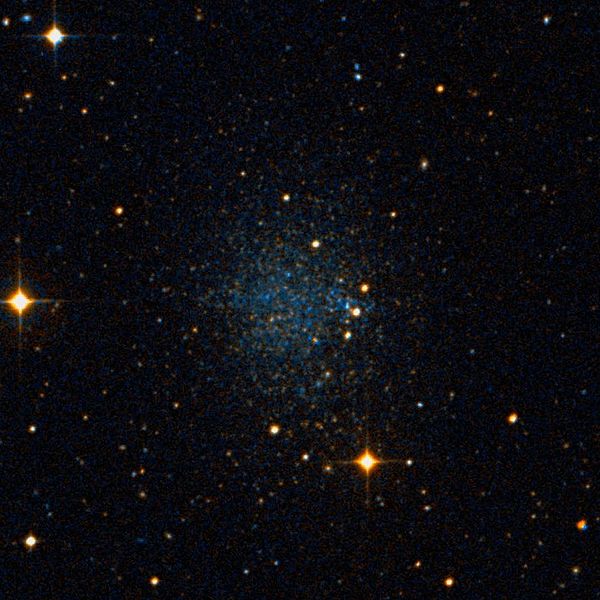 David - When you look at the Leo ring in the UV wavelengths we have detected ultraviolet emission coming from clumps within the gaseous ring. Those clumps are much smaller than the size of the Milky Way galaxy, for instance. They qualify as dwarf galaxies. The interesting thing about this detection is that these radio observations, the same ones we used to discover the gas of the Leo ring, also indicated there was no dark matter within those clumps of the ring. You have this combination of ongoing star formation and no dark matter within a cloud of pristine gas. It's really something quite unique that hasn't been seen before.
David - When you look at the Leo ring in the UV wavelengths we have detected ultraviolet emission coming from clumps within the gaseous ring. Those clumps are much smaller than the size of the Milky Way galaxy, for instance. They qualify as dwarf galaxies. The interesting thing about this detection is that these radio observations, the same ones we used to discover the gas of the Leo ring, also indicated there was no dark matter within those clumps of the ring. You have this combination of ongoing star formation and no dark matter within a cloud of pristine gas. It's really something quite unique that hasn't been seen before.
Chris - Why do you think it's not there and yet, if you look at all the other galaxies that we have around us, such as our own, you do see lots of dark matter in the centre? Why is this different?
David - It's just that the process of structure formation in the universe, essentially the dark matter acts as a seed. You have this process of gas collapsing onto dark matter. This happens to be one filament that doesn't appear to have completed that process. It's still floating away in this galaxy group but it hasn't actually accreted or fallen on to the more massive galaxies in the centre. It's somewhat of an oddball in the fact that it still exists at this point.
Chris - What is this telling us about the universe from which we all sprang? Our galaxy and the others that we know are out there? What insights does this give to the early phases of the universe?
David - I think it tells us that the universe can still surprise us first of all and second of all that there may be more ways to form galaxies than we had previously recognised. In particular, the process of dark matter had dominated the galaxy formation, it may not be the only one.
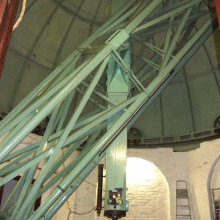
41:10 - Science of Stargazing & Telescope Technology
Science of Stargazing & Telescope Technology
with Carolin Crawford, Cambridge University
We invited Carolin Crawford to see what she thought of the telescope Dave built for
this week's Kitchen Science, then asked her how it compares to a real telescope...
Ben - Carolin, Dave has a very simple telescope but is this really what the first telescopes were like?
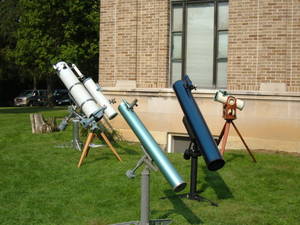 Carolin - It's actually a very good example of what the first telescopes were like and it's got the principle components you need. The first magnifying glass that Dave's got is the larger one. That's the one that collects all the light from things that are very faint. It makes them brighter. The second magnifying glass is what you need just to make that image bigger. It's supposed to be the principle component of any telescope we still use today.
Carolin - It's actually a very good example of what the first telescopes were like and it's got the principle components you need. The first magnifying glass that Dave's got is the larger one. That's the one that collects all the light from things that are very faint. It makes them brighter. The second magnifying glass is what you need just to make that image bigger. It's supposed to be the principle component of any telescope we still use today.
Ben - Does that include this enormous thing behind us? I'm assuming it is much more powerful?
Carolin - It is. The one we've got behind us is still quite old. It dates from 1838 but it's the same principle as Dave is demonstrating with his telescope. Instead of being a handheld magnifying lens it's actually one which is 12" in diameter. You can imagine that can collect an awful lot of photons from a distant source. The catch is to collect that and bring it down to a focus you need a tube that's just short of 20ft long. At the other end we have what we call the eyepiece. Really, that's just a glorified magnifier like Dave's second magnifying glass. We can change that around and get different magnifying strengths depending on whether we're looking for something that's small and star-like or large and fuzzy. You want different magnifications for different objects but the basic principle is very much the same.
Ben - How have telescopes moved on since these basic principles?
Carolin - Well, the kind of telescope we're demonstrating here is just one kind of telescope called a refractor. Most of the large telescopes today are reflecting telescopes. This idea was brought about by our own Isaac Newton, here in Cambridge. The idea here is that curved mirrors can have a lot of the same properties as curved lenses in the way that they will bend and bring light to a focus. The advantage of using mirrors is first, of all, the light gets folded up and gets bounced around between mirrors in the telescope. The telescope itself is a lot less cumbersome and a lot easier to move around. It doesn't have to be so long as a refracting telescope. There's a problem with these telescopes that use lenses in that you can only make the lens so big before it starts to sag in the middle. If you think of it you're holding it in place around the edges. If you get something that's appreciably more than 40" across the centre begins to deform under gravity and that distorts the images. If you want to go bigger you're really looking at using mirrors. They're much more reliable and they're much easier to make and transport. The very largest telescopes we use today all use mirrors. Those mirrors are all of the order of 8 - 10.5m across.
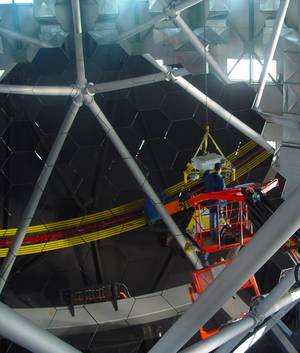 Ben - That sounds enormous. How do you make sure a mirror that size is exactly the right shape? I'd have thought it was so easy to go wrong and then ruin your entire telescope.
Ben - That sounds enormous. How do you make sure a mirror that size is exactly the right shape? I'd have thought it was so easy to go wrong and then ruin your entire telescope.
Carolin - The prime example of that is the Hubble telescope where they did get the curvature of the mirror wrong and there was a very big problem when it was first launched into space because all the images were out of focus. Usually we do test this quite thoroughly. There are also new and exciting experimental innovations which involve making mirrors out of segmented mirrors to mock up an even larger surface. There are many advances in how you use mirrors in a reflecting surface. It doesn't just have to be one solid mirror.
Ben - A lot of what is going on in space science now is not looking at visible light. Mirrors, lenses are very good at collecting visible light. How do we look at the things that we otherwise can't see? X-rays and microwave radiation?
Carolin - We're only talking about the visible side of astronomy and astronomy stretches right from gamma rays, x-rays, ultraviolet down to radio and infrared. Radio signals are collected on massive parabolic dishes. People may have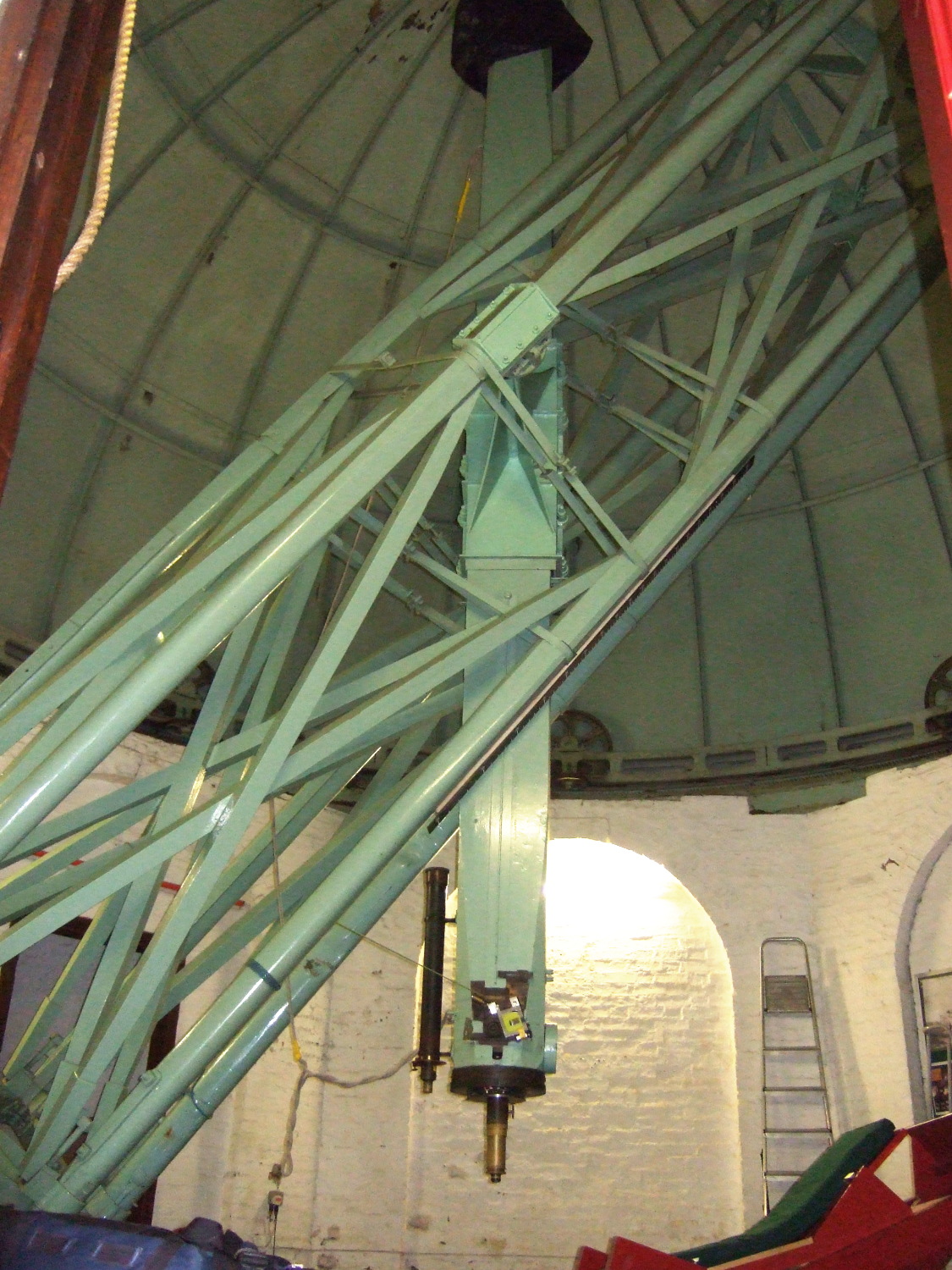 seen that in terms of Jodrell bank and here in Cambridge, the radio dishes just outside of Cambridge on Barton Rd. There are special challenges when you want to take pictures in the UV because atmosphere blocks out the light. That has to be done from orbit. You get some really exciting challenges from x-ray astronomy because x-ray photons have so much energy in them they would just slam into the surface of a conventional optical mirror. You can only bring them into focus if you put the mirror edge-on to the x-ray photons. It sort of ricochets off the mirrors and is brought into focus that way. If you looked at an x-ray telescope it would look nothing like the one Dave's got here. It would be a set of nested cylinders collecting photons and bringing them to a focus at the end of the cylinder. There's a huge variety of ways that astronomers use telescopes to do their astronomy.
seen that in terms of Jodrell bank and here in Cambridge, the radio dishes just outside of Cambridge on Barton Rd. There are special challenges when you want to take pictures in the UV because atmosphere blocks out the light. That has to be done from orbit. You get some really exciting challenges from x-ray astronomy because x-ray photons have so much energy in them they would just slam into the surface of a conventional optical mirror. You can only bring them into focus if you put the mirror edge-on to the x-ray photons. It sort of ricochets off the mirrors and is brought into focus that way. If you looked at an x-ray telescope it would look nothing like the one Dave's got here. It would be a set of nested cylinders collecting photons and bringing them to a focus at the end of the cylinder. There's a huge variety of ways that astronomers use telescopes to do their astronomy.

Why do leaf shapes vary so much?
We put this to Ed Tanner, Senior Lecturer in Plant Sciences at Cambridge University
I think the answer to the question about why closely related trees growing in exactly the same ground and the same climate have different-shaped leaves is actually that they don't. Because they're closely related they are very similar. For example, all oaks have broadly similar-shaped leaves because they share most of their genetic information. Perhaps a more interesting question is why distantly related trees growing in the same ground and in the same climate have different shaped leaves. The answer is it doesn't matter very much. As long as leaves are reasonably good at doing their job, which is fixing carbon dioxide in the atmosphere it doesn't matter whether they are wavy at the edges or not wavy at the edges. They have to absorb the light and once they've absorbed the light they would fix CO2. As long as they put their competitors in the shade any reasonably functioning leaf will do the job. It matters where your leaves are in relation to other trees. If you're an ash tree you've got to be above an ash tree or if you're a beech tree you've got to be above an ash tree. It doesn't much matter what your leaves are like.
How do we know that another planet collided with the Earth?
Chris - Well, we have to go by what the models are telling us and what samples we've got. We've got a very large moon around the earth. In fact, it's unfeasibly large for a planet of our size. Why have we got such a big moon where it is? What the prediction is, and based on what we know about the composition of the moon from samples that the Apollo astronauts have brought back is that the moon is made of exactly the same stuff, give or take, as the surface of the Earth - the Earth's crust. The big question is how did something made pretty much of the same material as the Earth end up orbiting the Earth unless something bashed it an put it up there? The best suggestion that scientists can come up with, based on all the evidence we have, is that during the early phases of the formation of the solar system (something like 4.5 billion years ago) there were two planets. One a future Earth, one another planet which they've notionally called Thea. These were very similar in terms of their orbital pattern. One ran into another - it was like cosmic billiards that went on. As a consequence of their massive great collision the cores of both planets effectively fused. In the course of this collision a lot of the surface material from the Earth got ejected into space and it formed a sort of shroud around the Earth which slowly coalesced in the same way that rings around Saturn have coalesced to what would have originally been an envelope. They then coalesced and aggregated to form the moon. It's on the basis of there's no other better explanation than that one to explain why we have this phenomenon of this big moon and what the moon's made of.
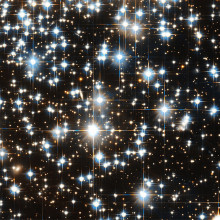
How do we measure distances across the universe?
Chris Smith shed some light on this question...
Chris - This is a very difficult question to answer, or at least it was.
The problem is that, if you're looking at stars in the night sky, if a star is at a certain distance from you, its brightness can't really be used as a measure of how far away it is because a bigger star will be brighter to begin with; and because light gets dimmer the farther it is from you, a big star can be a lot farther away than a small star and yet they'll both appear exactly the same brightness. How do you solve that one?
This kept astronomers guessing for a very long time until about the turn of last century. A woman in contact with Hubble, after whom the Hubble Space Telescope is named, solved the problem. Her name was Henrietta Levitt and she was looking at star charts. She noticed that some stars appeared to get bigger and brighter and then dimmer and weaker. They did it with a regular period. These have now become known as the "stellar yardsticks". They're called Cepheid variables. They're stars that swell up and shrink down.
Because the period at which they do that varies with the size of the star, you therefore know, if you look at how often a star like that is blinking on and off, how big it is. Therefore you know how bright it is. Because light follows an inverse square law you can work backwards to work out how bright that star must be and therefore how far away it is.
Scientists now use these Cepheid variables when they look at a distant star structure they can use the period of any Cepheid variables that are there to work out how far away those particular entities are. That's a stellar yardstick and it was solved by a lady at Harvard a hundred years ago.
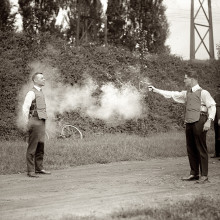
How fast would a bullet need to leave a gun in order to get into space?
Chris - The forum has come to our rescue to answer this one: www.thenakedscientists.com/forum. There's a terrific answer.
RD points out that anything leaving the Earth into space needs to be travelling at escape velocity. That means 11.2km/s.
To put that into perspective, even a high-powered assault rifle probably fires things at 1km/s. It's running significantly too slow in order to achieve escape velocity. It also doesn't take into account air resistance.
There's a very good answer from BoredChemist. One thing to consider here is what about if we just build a powerful rocket and fire something from Earth? He says there's a limit to how far you can get something to go and how fast you can get it to go using a gun. The projectile is driven by hot gases producing the explosion but the gas is made of molecules and they have a range of velocities. The hotter the gas, the higher the average velocity.
To a fair approximation, the average speed of the molecules is the speed of sound in that gas. A projectile is moving faster than that the gas molecules will get left behind so they can no longer push on the projectile to make it go faster. By fudging the issue and using hot light gases like helium you could make it go a bit faster. There's no way that's you'll get to escape velocity.
Sorry about that!
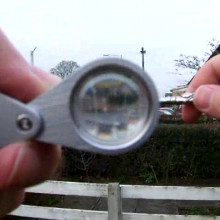










Comments
Add a comment